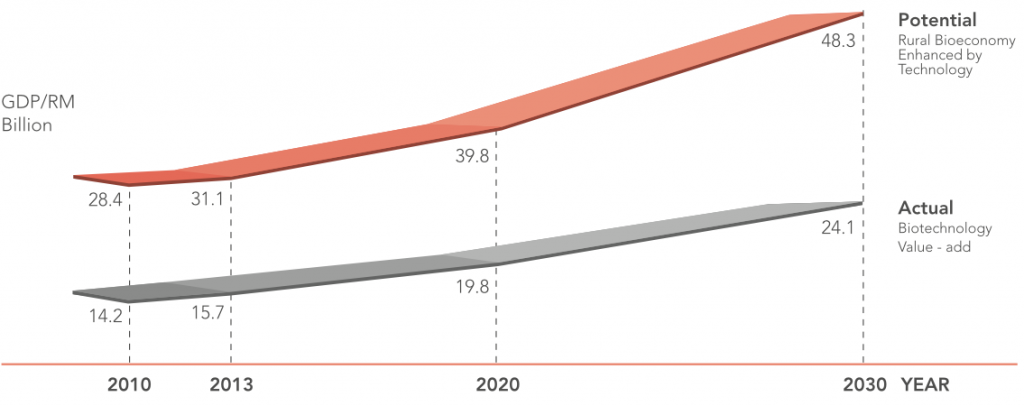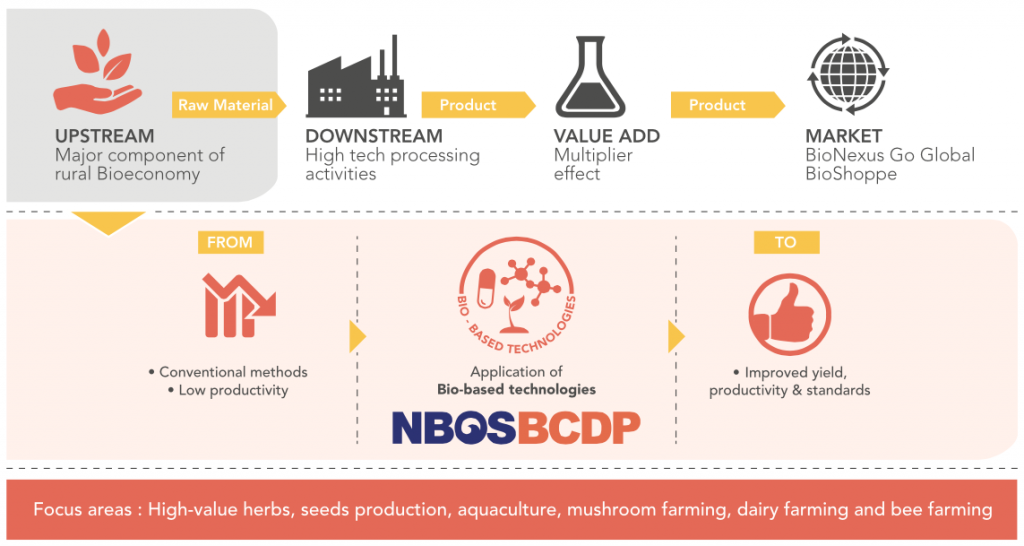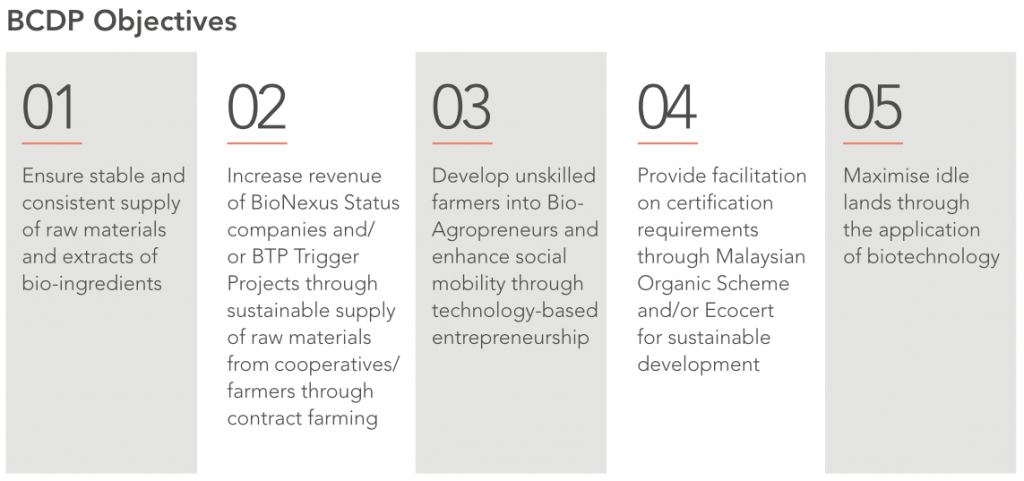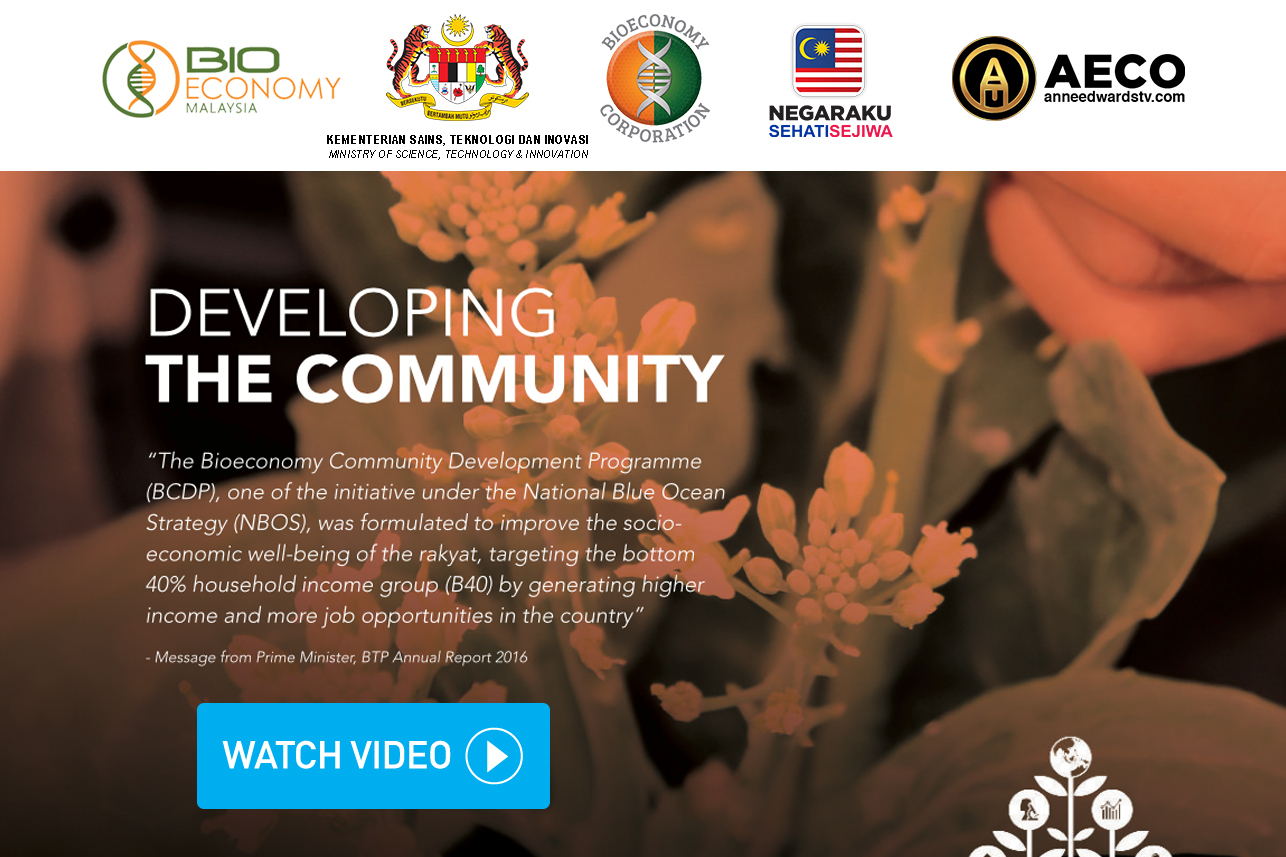Overview
Rural Bioeconomy can be developed further as a significant contributor to our economy. Based on stimulated growth rate at 15%, rural portions (i.e. smallholder agriculture and aquacilture) can contribute up to RM24.1 billion to the Malaysian GDP in 2030 and may even double up to RM48.3 billion if advanced bio-based technology is applied across the sector with appropriate policy actions.

The implementation of the Bioeconomy Community Development Programme (BCDP) serves to bolster the upstream portion of the supply chain. Developing the upstream sector creates a ripple effect throughout the entire industry value chain. Bio-based technology can amplify the economic contributions of agricultural production sectors beyond current capacities by enhancing yield, productivity and quality of outputs. the creation of a secure, local, high quality source of raw materials enables capacity expansion for downstream ventures as well improved market penetration.

 Watch Bioeconomy Community Development Programme (BCDP) Videos :
Watch Bioeconomy Community Development Programme (BCDP) Videos :
Weeding out the taboo from marijuana & ketum
Making the most of what mother nature has to offer is what Dr Nabisar Mustan does best, even if her research becomes a subject of controversy.
Kacip Fatimah transforms Kampung Sagil into a pot of gold
A project that is set to elevate the social mobility of rural communities and growth of the herbal industry in Malaysia – the planting of Kacip Fatimah at Kampung Sagil Tangkak, Johor.
May 19,2017 saw the official handover of the MOSTI Social Innovation (MSI) project to Persatuan Peniaga Kecil Kampung Sagil Tangkak Johor.
Oyster mushrooms selling like hot cakes
The commercial cultivation of oyster mushrooms at Kampung Kondok is among Bioeconomy Community Development Programme’s projects implemented through MOSTI’s 2016 Social Innovation (MSI) RM24 mil fund.
The money is also used to cover expenditure on training, construction of mushroom sheds and the purchase of 100,000 poly bags for 10 members of the Waris Jati Kondok Cooperative.
The mushroom farming project is able to generate 652,000 ringgit annually for 10 mushroom sheds or a monthly income of RM54,000.
Langkawi is home to priceless seaweed
Never has so much passion been portrayed in transforming Langkawi into the hub for seaweed production in Peninsular Malaysia.
This was nevertheless the case for the 20 fishermen from the Persatuan Pengusaha Rumpai Laut Langkawi whose hard work and dedication has since paid off for them.
For starters, they are producing more than 100 cages of seaweed with maximum capacity of 700 kilograms per cage.
Thus generating an income of more than RM3,000 a month and at full harvest, an income of RM752,000.
Rice straw of Pendang Kedah eyes billion dollar packaging industry
The rice straw project under the Bioeconomy Community Development Programme (BCDP) pioneers the Malaysian government’s effort to penetrate the global eco-friendly packaging industry worth US$178 billion.
Follow Bioeconomy Corporation Malaysia











Keep on writing, great job!
Thanks for your marvelous posting! I really enjoyed reading
it, you may be a great author. I will be sure to bookmark your blog and will
often come back sometime soon. I want to encourage yourself to continue your great posts, have a nice day!
I am in fact pleased to read this webpage posts which carries lots of useful data,
thanks for providing these kinds of information.
Good day I am so happy I found your site, I really found you by
error, while I was searching on Yahoo for something else,
Anyhow I am here now and would just like to say thanks
for a incredible post and a all round thrilling blog (I also
love the theme/design), I don’t have time to read it all at the minute but I have bookmarked
it and also added your RSS feeds, so when I have time I will be back to read a lot more, Please
do keep up the great jo.
You can definitely see your expertise in the article you write.
The world hopes for even more passionate writers like you who aren’t afraid to say how they believe.
Always follow your heart.
If you wish for to grow your knowledge just keep visiting this site and be updated with the most recent news posted here.
Hi, I do think this is a great site. I stumbledupon it 😉
I am going to return once again since i have book marked it.
Money and freedom is the best way to change, may you be rich and continue to
guide others.
I’m not sure where you are getting your info, however great topic.
I must spend some time finding out more or understanding more.
Thanks for magnificent info I was in search of this info for
my mission.